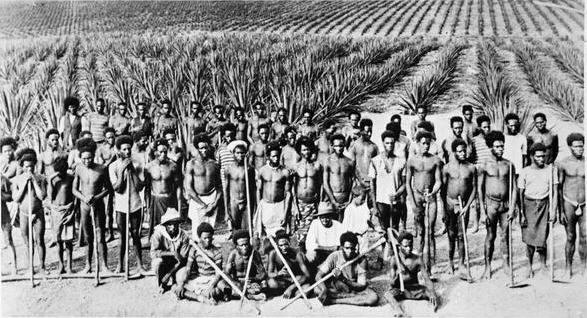Slavery
According to the Commonwealth Criminal Code 270.1 Slavery is “the condition of a person over whom any or all of the powers attaching to the right of ownership are exercised, including where such a condition results from a debt or contract made by the person”. However, the traditional view of this is that people are chained up and controlled or bought and traded like property.
Slavery still exists today! Not in the traditional sense, but through other numerous ways:
- Control of movement
- Control of physical environment
- Psychological control
- Measures taken to prevent or deter escape, force, threat of force, coercion or deception
- Assertion of exclusivity
- Subjection to cruel treatment and abuse, control of sexuality, and forced labour
- Power to use services without commensurate compensation
Trafficking
“The recruitment, transportation, transfer, harbouring or receipt of a person for exploiting that person through slavery, forced labour, servitude, debt bondage, organ removal or the forms of exploitation” is defined as trafficking. Traffickers move their victims using force, threat, coercion, or other deceptive or abusive means.
This is a violation of human rights and a serious crime. Exploitative practices such as forced labour, slavery often occur because of trafficking. It is important to understand that trafficking and people smuggling are different. People smuggling involves the “illegal movement of people and does not involve moving people for exploitation after arriving in the destination country.”
How this effects Australia?
 “Australia is a destination country for people who have been trafficked. The exact number of people trafficked to Australia each year is unknown. Since 2004, the Australian Federal Police have undertaken over 340 investigations and assessments of allegations of trafficking and offences related to slavery and servitude. 59% of the investigations conduct by the AFP between 2011 and 2012 related to sexual exploitation, while the remainder related to other forms of labour exploitation.”
“Australia is a destination country for people who have been trafficked. The exact number of people trafficked to Australia each year is unknown. Since 2004, the Australian Federal Police have undertaken over 340 investigations and assessments of allegations of trafficking and offences related to slavery and servitude. 59% of the investigations conduct by the AFP between 2011 and 2012 related to sexual exploitation, while the remainder related to other forms of labour exploitation.”
Most of the trafficking is not always under lock and key. Instead these people are effectively controlled through more subtle methods such as “confiscation of travel documents, threats of violence, fear of being reported to authorities and social, cultural and physical isolation”. “While some trafficked slaves are unlawfully in Australia, others may hold valid visas entitling them to work in the country.”
Slavery in Australia
Woman enslaved in Relationship
Name: Maria (not the real name)
Age: 24
Country of Origin: Philippines
Visa type: Prospective marriage visa
Agreeing upon marring an Australian man and after giving him money for her visa, Maria arrived in Australia to work on her new husband’s shop. She was promised a secured job and getting into an English class in her spare time. She was earning 10$ a week in Philippines and supporting her son and her mother before.
After arriving, her fiancé took her passport and was forced to work in the shop seven days a week. She was not allowed to attend the English classes as promised and was only given 20$ a fortnight. She was never paid a wage and was not allowed to leave the house. If she didn’t do what the family asked her to do, her fiance’ threatened to hit her and also she was not allowed to contact her family back in her country.
The Sugar Labour Trade
“Between 1863 and 1940 about 60,000 Islanders were transported to Queensland to work on Sugar plantations. While some of them came willingly the rest was kidnapped from their homes. These people worked in harsh conditions in the Queensland sugar fields, some in conditions akin to slavery. However few of them escaped some form of physical violence. Abuse of these humans included being beaten, being deprived of food or leisure time, medical neglect and sometimes separation of married couples.
Because the Pacific Islanders were paid so poorly compared to other unskilled workers in Australia, they were seen by some as a threat to employment. Opposition to these non-white immigrants came in some cases from those involved in the labour movement. They did not object when the Commonwealth decided to deport most Pacific Islanders. After Federation a few thousand Pacific Islanders were not deported and were permitted to remain in Australia. Today north Queensland is home to more than 20,000 of their descendants.”
Prevention of Slavery in Australia
It can be difficult to tell if someone is in a severely exploitative work situation.
People who are enslaved in Australia are visible every day. They may work in a restaurant, on a construction site, in a shop or on a farm. It is important to note that the vast majority of migrant workers in Australia are not in forced labour. However, sometimes you might have the instinct that something is very wrong in a workplace.
When we ask people about their experiences we find that the following questions can help us identify someone who has been trafficked or is enslaved or in forced labour.
- Do you receive a pay?
- Do you have a debt or contract?
- Can you leave your job if you want to?
- Can you come and go as you please?
- Are you or your family threatened?
- What are your working and living conditions like?
- Where do you sleep and eat?
- Do you have to ask permission to eat/sleep/go to the bathroom?
- Are there locks on your doors/windows so you cannot get out?
- Is your identification or documentation taken from you?
If someone is a migrant worker and you see them being treated badly by their boss, forced to work excessive hours or in harsh conditions, or it looks like they do not have the choice to leave their workplace, feel free to contact us for some confidential advice about the best way to handle the situation.
Not all people in slavery are migrant workers. In rare cases, Australian citizens or residents are enslaved in very extreme situations of labour exploitation. (Anti-Slavery Australia)


